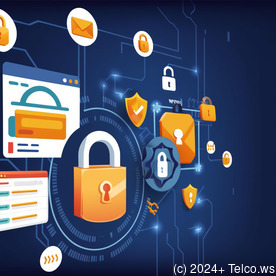- Outstanding Pros ready to help.
- Pay Crypto for Fiat-only Brands.
- Access Top Tools avoiding Sanctions.
- You can buy in total privacy
- We manage all legalities for you.


Security Information and Event Management (SIEM): The Comprehensive Approach to Threat Detection and Response




Introduction
In the complex and ever-evolving landscape of cybersecurity, organizations require powerful tools to monitor, analyze, and respond to potential threats in real time. Security Information and Event Management (SIEM) systems have emerged as a critical component of many enterprise security strategies. This comprehensive guide explores the intricacies of SIEM, detailing its benefits, best practices for implementation, and cutting-edge solutions available in today’s market.




What is Security Information and Event Management (SIEM)?
Security Information and Event Management (SIEM) is a unified solution that combines Security Information Management (SIM) and Security Event Management (SEM). SIM focuses on storing and analyzing log data over time, while SEM is centered on detecting and responding to security events in real time.
A SIEM system collects and aggregates data from diverse sources within an organization's IT infrastructure, including firewalls, intrusion detection systems, servers, and endpoints. The platform analyzes this data to identify patterns, anomalies, and potential security threats.
Key Components of a SIEM System
- Log collection agents
- Centralized log management platform
- Real-time monitoring and alerting capabilities
- Advanced analytics and machine learning algorithms
- Reporting and visualization tools




Benefits of Implementing SIEM
The integration of a SIEM into an organization's cybersecurity strategy offers numerous advantages:
- Enhanced Threat Detection: SIEM systems identify sophisticated threats that may evade traditional security measures.
- Improved Incident Response: Real-time alerts and detailed forensic data empower faster and more effective incident response.
- Compliance Support: SIEM assists organizations in meeting regulatory requirements by providing auditable logs and reports.
- Cost Efficiency: Centralized security monitoring reduces reliance on multiple point products and associated costs.
- Scalability: SIEM systems easily adapt to organizational growth, accommodating increasing volumes of data and users.




How SIEM Works
The operation of a SIEM system involves several key steps:
- Data Collection: Agents and sensors deployed across the network gather log data from various sources.
- Centralization: Collected data is sent to a centralized SIEM platform for processing and analysis.
- Correlation: The SIEM correlates data from multiple sources to identify potential security incidents.
- alert Generation: Based on predefined rules and anomaly detection, alerts are generated for suspicious activities.
- Visualization: Alerts and security events are showcased in user-friendly dashboards and reports.
- Investigation: Security analysts investigate detected threats using the SIEM platform to gather forensic evidence.
- Response: Based on findings, appropriate measures are taken to mitigate identified threats.




Key Features of Modern SIEM Systems
Advanced SIEM solutions incorporate several cutting-edge features:
- Machine Learning and AI: Intelligent algorithms facilitate the identification of unknown threats and automation of routine tasks.
- Cloud Integration: Seamlessly integrates with cloud-based services and applications.
- User Behavior Analytics (UBA): Analyzes user behavior to uncover insider threats and compromised accounts.
- Threat Intelligence Feeds: Incorporates external intelligence to enhance situational awareness.
- Automation Capabilities: Automates repetitive tasks and workflows for operational efficiency.
- Container Monitoring: Extends security coverage to containerized environments and microservices architectures.
- IoT Device Monitoring: Covers Internet of Things devices to ensure comprehensive security.
- Blockchain Integration: Supports blockchain-based applications and decentralized networks.
- Advanced Analytics: Provides deep insights through statistical analysis and predictive modeling.




Challenges in Implementing SIEM
Despite the significant benefits, organizations may encounter several challenges when implementing SIEM systems:
- Data Overload: The sheer volume of log data can overwhelm systems and analysts.
- False Positives: SIEMs can generate false alarms, leading to alert fatigue and decreased effectiveness.
- Integration Complexity: Integrating SIEM with existing security tools and infrastructure can be challenging.
- Cost Considerations: SIEM systems may entail significant costs, especially for large-scale deployments.
- Skill Requirements: Specialized skills are necessary for effectively utilizing SIEM platforms.
- Regulatory Compliance: Meeting specific regulatory requirements during SIEM implementation can be complex.




Best Practices for SIEM Implementation
To maximize the benefits of SIEM and overcome challenges, organizations should adopt the following best practices:
- Start Small: Initiate with a pilot project to gauge effectiveness before a full-scale rollout.
- Define Clear Policies: Establish clear policies regarding log retention, data sharing, and incident response.
- Choose the Right Tools: Select SIEM solutions that match your organization’s size, budget, and usage requirements.
- Train Your Team: Provide security analysts and administrators with adequate training on SIEM usage and threat interpretation.
- Continuously Refine: Regularly audit and improve your SIEM configuration to adapt to new threats.
- Leverage Cloud Services: Consider cloud-based SIEM for scalability and reduced operational overhead.
- Implement Change Management: Develop a change management process to facilitate smooth updates and upgrades.




Case Studies: Successful SIEM Implementations
Here are examples of organizations that have successfully implemented SIEM systems to enhance their cybersecurity:
- Financial Institution: A major bank employed a SIEM solution to monitor transactions across thousands of branches, effectively detecting and preventing fraud, resulting in significant cost savings and improved customer trust.
- Healthcare Provider: A large healthcare organization utilized SIEM to track access to patient data and detect unauthorized attempts, enhancing the protection of sensitive medical records and ensuring compliance with HIPAA regulations.
- Retail Chain: A global retailer deployed SIEM to monitor point-of-sale systems, identifying potential credit card skimming attacks, which prevented substantial financial losses.




Choosing the Right SIEM Solution
When selecting a SIEM system, consider the following factors:
- Vendor Reputation: Research the experience and reputation of the vendor in the SIEM market.
- Scalability: Opt for a solution that can accommodate your organization’s evolving needs.
- Integration Capabilities: Ensure compatibility with your existing security tools and infrastructure.
- User Interface: Choose a system that offers an intuitive interface to improve productivity.
- Support and Maintenance: Assess the level of support, including documentation, training, and updates.
- Total Cost of Ownership: Consider all costs, including licensing fees and maintenance expenditures.




Conclusion
Security Information and Event Management (SIEM) has become an indispensable asset for modern cybersecurity professionals. By providing real-time visibility into an organization's IT environment, SIEM systems enable proactive threat detection and rapid incident response.
As threats continue to evolve, organizations must implement robust SIEM solutions to stay ahead of potential risks. Whether you're a small startup or a multinational corporation, investing in a comprehensive SIEM system can significantly bolster your security posture and protect valuable digital assets.
Transform Your Security Operations with Our SIEM Solutions
For organizations looking to harness the power of SIEM, we are offering our comprehensive SIEM implementation package for just $45,000. This package provides an array of resources, tailored solutions, and training designed to empower your security team and optimize your security environment.
Interested in buying? The price for our SIEM implementation package is $45,000. Please proceed to our Checkout Gateway and use our Payment Processor to remit the amount of $45,000 to our Company, following the detailed instructions provided. Once payment is completed, please contact us via email, phone, or our site with your payment receipt and details to arrange your Security Information and Event Management Service. Thank you for your interest!